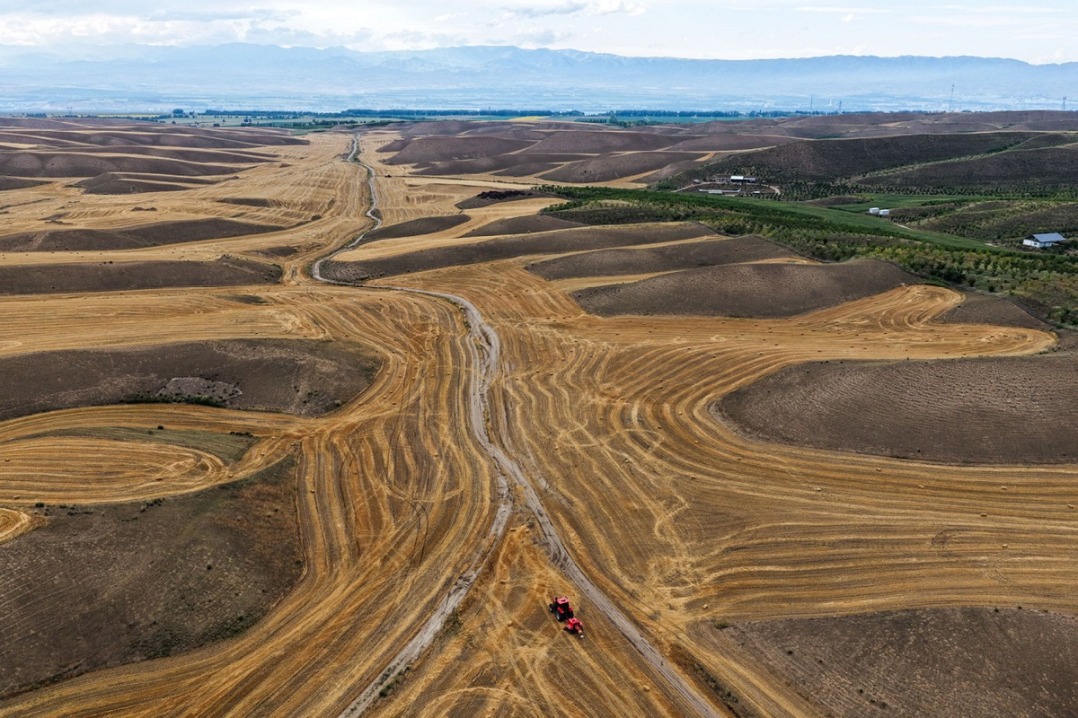以人民为中心是共产党人最大的“初心”


A video of a 29-year-old railway officer hand-drawing China's entire railway network from memory has gone viral, garnering widespread attention for her exceptional skill and dedication to passenger service.
Xing Siyuan, a passenger service duty officer at the Jinhua train depot of China Railway Shanghai Group Co, has memorized and can manually draw a comprehensive diagram of the national rail network. Her detailed map includes 1,092 station names, 388 railway line names, 975 fare calculation stations and 117 non-calculation stations. Using just two pens, she reproduced a version of China's railway map that closely resembles the official printed one.
The idea of memorizing the map first came to Xing during the 2018 Spring Festival travel rush, when she assisted an elderly passenger who struggled to plan a journey home without a smartphone or family support.
"That moment made me realize the importance of being able to provide immediate transfer solutions to passengers, especially for those who might not be tech-savvy," she said.
Xing achieved her goal in 2022 by developing a systematic approach of dividing the network into four geographical sections, mastering main lines before progressing to lines at a branch level.
Her memorization technique combines mnemonic devices with geometric visualization.
"I would take the first character of each station name along a route and create a memorable phrase," she explained.
For the Longhai line stretching from Jiangsu province to the northwest, she developed memory aids using the station names' characters in sequence. She also associates network sections with basic geometric shapes such as triangles and hexagons to enhance recall.
As a passenger service officer, Xing's knowledge has proved invaluable in daily operations. While she can draw the full network in four to five hours, the real benefit lies in her ability to assist passengers instantly.
"When facing elderly passengers or those who need urgent transfer arrangements, I can immediately provide multiple routing options without relying on digital devices," she said. This skill is especially helpful during peak seasons, when tickets may be limited at major transfer stations.
China's rapidly expanding railway network presents an ongoing challenge.
"Compared to the past, today's railway map is considerably more complex with its intricate web of intersecting routes," Xing noted.
China's railway system spanned more than 160,000 kilometers by the end of last year, and continues to expand annually.
Xing keeps her knowledge up to date by studying official map updates and redrawing the network nearly every other day to reinforce her memory.
Despite being dubbed the railway's "super brain" on social media, Xing remains modest.
"I don't consider memorizing and drawing the railway network particularly extraordinary," she said. "Many of my colleagues are equally excellent in their ways."
In an era dominated by artificial intelligence and digital tools, Xing's achievement has sparked interest in the role of human expertise. She believes mastering such skills helps develop problem-solving abilities and brings unique value to customer service.
"While new technologies such as AI are indeed advanced, mastering this skill has significantly enhanced my professional capabilities," she said.
"More importantly, it enables me to provide immediate, personalized assistance to passengers without relying on technology, especially when quick, alternative solutions are needed," she added.





































